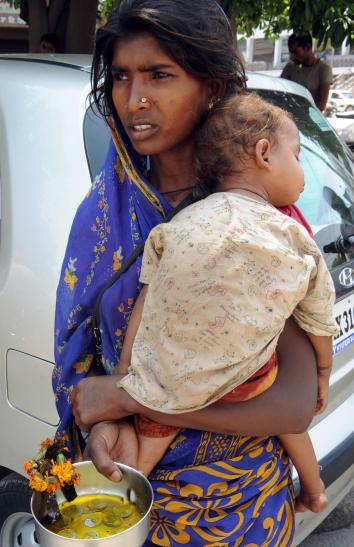Map: What Countries Have the Worst Gender Gaps?
Plus, a simple yet powerful solution to help close the gender gap.

Photo by Narinder Nanu/AFP/Getty Images.
In Half the Sky, a documentary series and book, journalists Nicholas Kristof and Sheryl WuDunn offers a compelling narrative of women’s suffering. They shine their spotlight on the value of empowering women economically,and make the case that access to opportunities for income and wealth creation, investment, and entrepreneurship are critical boosters of female power. But they are missing a critical solution that would allow women to take control of their own futures, and break the cycle of poverty and subjugation. While giving grown women access to assets and finance is valuable, it’s often too late. Mounting research shows that breaking the cycle of poverty—and creating lasting economic empowerment—requires starting young. And new technology enables us to do just that. On this first-ever International Day of the Girl, we offer a simple yet powerful solution: Let girls save money for their futures.
This is particularly important in the countries with the worst gender inequality. The map below shows countries for which the United Nations Development Program has calculated a Gender Inequality Index. Along with this information, we’ve included several measures to show the status of girls in each country. The Global Savings and Social Protection Initiative at the New America Foundation is conducting research on where government-to-person cash transfer programs exist in developing countries. According to their data, six countries have cash transfer programs that target girls specifically. (These countries are indicated on the map.) After the map, learn more about how we can end oppression by putting our money on girls.
Here’s how our proposed solution works: Use biometric identification, such as digital finger prints or retina scans, to give girls a formal economic identity and make sure they are counted and served by new policies and programs. Then build on advances in electronic payments and mobile money, which allow automatic provision of financial services via a digital platform or mobile device. This helps make sure the girls—not corrupt government officials or pesky relatives, for example—receive aid money. Transfer dollars electronically through systems linked directly to savings accounts owned and operated by the girls. Finally, tap into behavioral economics, which shows that simple “nudges” can lead to savings habits, asset accumulation, and investments in education, health and enterprise.
By starting young and giving girls resources, they get more than just money and economic opportunity. Research shows that ownership of assets can have strong social and psychological impacts as well. And that is what girls need: more power over their lives, a new ownership of their futures, protection from inevitable shocks or pressures, and hope where none may have existed.
Some countries have taken a first step in this direction, but efforts could be more powerful. India’s Apni Beti, Apna Dhan program, which reaches about 6,000 girls in Haryana, provides cash payments into a savings bond account on the condition that the girl’s family keeps her in school rather than marrying her off young. When the girl reaches 18, she gains access to the funds. ABAD has had some remarkable success, but it is missing a critical opportunity: The girls never interact with their accounts, limiting their ability to learn about or feel empowered by their asset, much less contribute to it should they so choose. Moreover, the program could take advantage of the country’s massive, biometric Universal ID plan to ensure all girls who need it have access to the program.
While savings-linked cash transfers are not a panacea to end gender-based oppressions, they offer a high-impact model for early and targeted interventions that can influence health, education, and economic opportunities. More importantly, they provide a needed asset that a girl can hold proudly, use wisely, and own completely.
More information on this proposed solution can be found in the newly released report “Investing in Girls: Opportunities for Innovation in Girl-Centered Cash Transfers.”